Last Chance to Catch NYC's Holiday Notalgia Train
We met the voices of the NYC subway on our nostalgia ride this weekend!


When walking down Eldridge Street in the Lower East Side, it’s apparent that this street does not stand out as one of the glossier or trendier blocks in the neighborhood. As gritty as it may be, however, you’ll be walking through 300 years of New York City history, filled with interesting secrets and stories.
To learn more about the history of the neighborhood, make sure to join us for our tour of the Eldridge Street Synagogue, taking place on Thursday, October 26th. In the meantime, here are 10 highlights of Eldridge Street, which runs from Houston Street south to East Broadway.
Secrets of the Eldridge Street Synagogue After Hours Tour
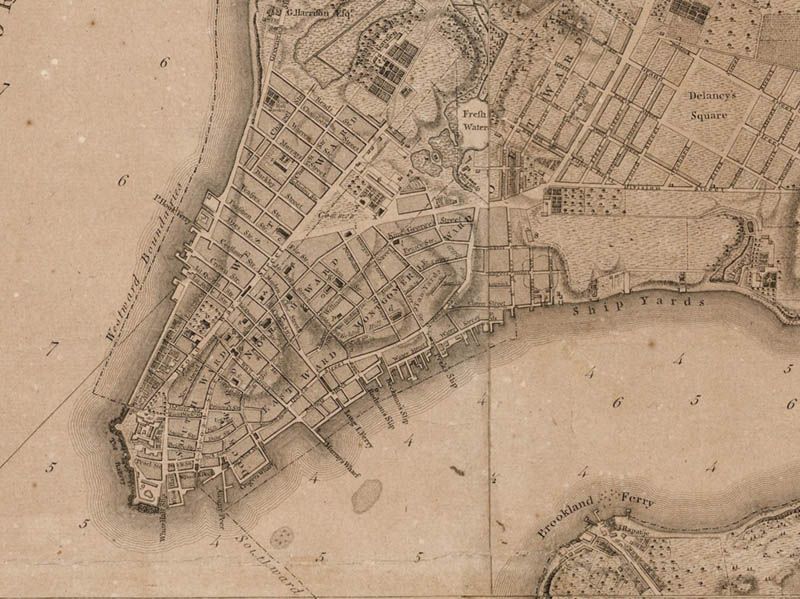 The Ratzer Map of New York City, 1767, NYPL Digital Collections
The Ratzer Map of New York City, 1767, NYPL Digital Collections
In the 1766, King George III commissioned cartographer, Bernard Ratzer, to create a detailed map of lower Manhattan, which would later be utilized by the British Army during the Battle of Brooklyn. When looking at the Lower East Side in the 1760’s, the area consisted of farmland owned by families such as the Delancey’s and Rutgers’. Eldridge Street was simply Third Street, a dirt road leading north to Delancey Square.
In 1812, the young nation would once again be at war and many New Yorkers enlisted. Among them was a young lieutenant by the name of Joseph C. Eldridge. According to eye witnesses, Lt. Eldridge died in Canada battling against British forces and Ottawa Natives. Witnesses described his death as happening under some very grisly circumstances. In 1817, the city renamed Third Street to Eldridge. Allen, Chrystie and Forsyth Street were also named for soldiers who fell during in the War of 1812.
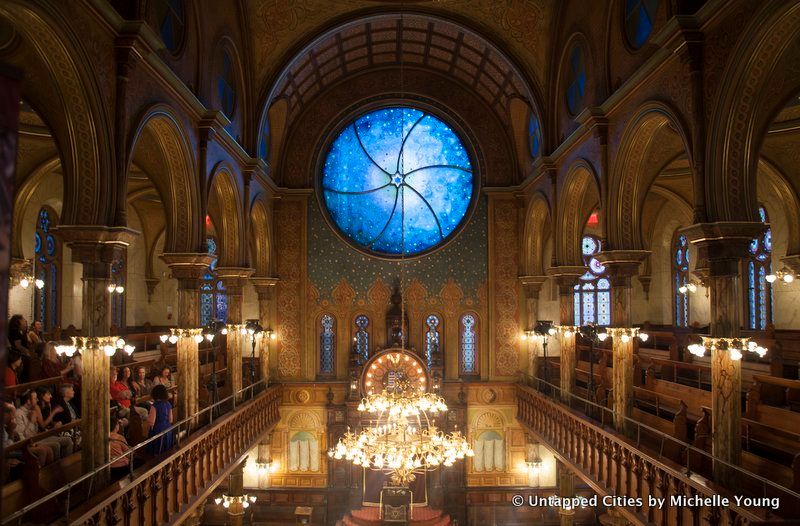
The Eldridge Street Synagogue was built in 1887 as the first great house of worship by Eastern European Jews in the United States. Designed by German Catholic architects, Peter and Francis Herter, the synagogue embodied the promise of religious freedom, immigrant aspiration and the formation of a Jewish-American identity. For decades, the synagogue thrived. But in the 1920’s, many Jewish families were moving away from the Lower East Side and new immigration restrictions curbed the Jewish population even further.
Post WWII, the congregation was struggling and the decision was made to close up the main sanctuary and meet for worship in the basement. Twenty years later, a NYU Professor named Gerard Wolfe would open the doors to the main sanctuary to discover what he described as “the twilight zone.” In 1987, the Eldridge Street Project was formed with a mission to restore the synagogue to its former grandeur. Twenty years and 20 million later, the building reopened as the Museum at Eldridge Steet. Today the museum tells the story of the rise, decline and restoration of the synagogue and preserves the history of the Jewish Lower East Side.
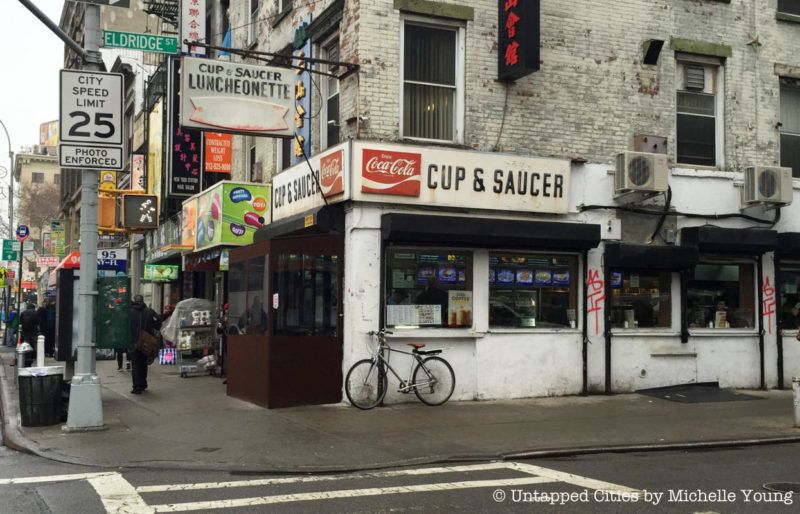
Originally built as a private row house, 22 Eldridge Street was later converted to a jail in 1836 after serving as a city watch house. The Eldridge Jail was a Debtors prison and notorious for deplorable conditions. According to an 1846 report from the Pennsylvania Prison Society, the prison was known as a “place of suffering and a standing monument of public injustice.”
In 1854, a reformer advocated for the installation of a lending library. Despite these efforts, the jail continued to be a corrupt, unsanitary place, with multiple offenders escaping from the jail due to a low fence.
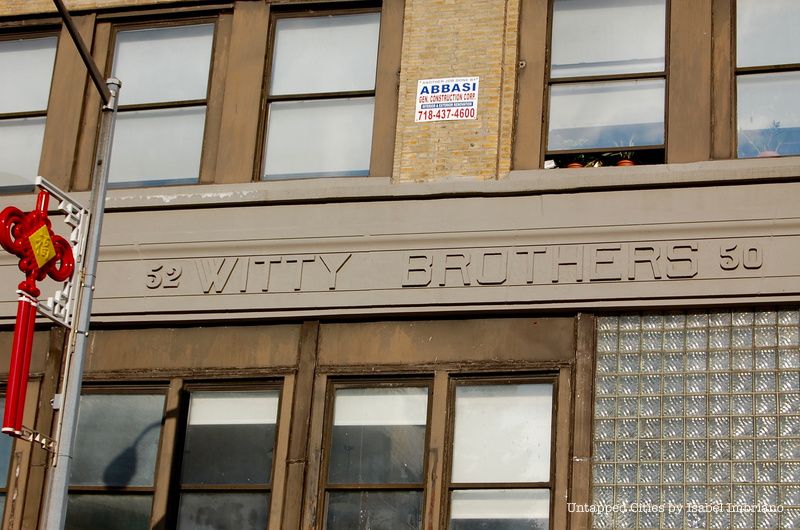
The Witty Brothers Clothier, an elegant men’s fashion store originally located at 52 Eldridge Street, was founded in 1888 by David Witty. It was known for its unwavering high quality and use of luxurious fabrics. Its most notorious customer was Monk Eastman, a mobster who dominated New York street crime at the turn of the century. According to historian Herbert Asbury, Eastman accentuated his ferociousness… by affecting a derby hat several sizes too small.”
His reign came to an end On December 26th, 1920 when he was shot multiple times by a crooked Prohibition agent, and his body was discovered in the gutter just south of Union Square Station. He was identified by the tag inside his jacket which read “E. Eastman, October 22, 1919.” The day after the murder, The New York Tribune ran a front page story about the case. One of the people interviewed family member and store owner Henry Witty: “Monk Eastman, the old time gang leader… We have made clothes for him for nineteen years. The last suit we made for him was delivered October 21, this year.”
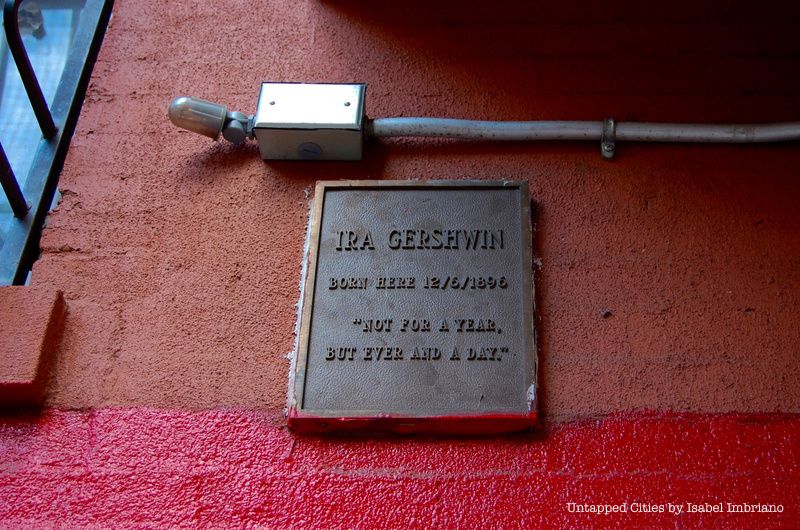
It is very likely that the Gershwin talent for words and music began right here on Eldridge Street. According to the site Gershwin in New York , the Gershwin Family lived in over 20 different apartments in New York City and in 1896, their oldest son, Ira, was born in this tenement building. An introverted and literary child, Ira would go on to collaborate with his younger brother, George, and create masterpieces such as “Porgy and Bess”, “Of Thee I Sing” and “Funny Face.”
Today, only a tiny plaque affixed to the building stands as a testament to the Gershwin Tenement.
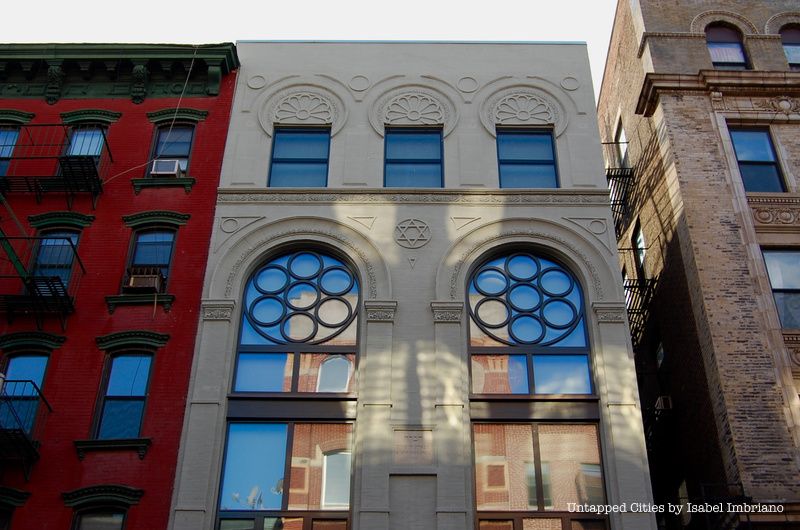
87 Eldridge Street was once the home of congregation, Bnai Tifereth Yerushalaim, which purchased the property in 1888. Originally built as a tenement apartment in 1874, the building served the congregation until the 1960’s and was then acquired by the Syrian Orthodox institution Achim Aram Zobah (Association of Syrian Rites). It was later sold to an African Methodist Episcopal Church, which occupied the building until the late 70’s.
In the 1970’s, abstract-expressionist artist, Milton Resnik, bought the building and converted it into his studio and residency. His wife, Pat Passlof, also an artist, lived and worked in her own synagogue. After Milton died in 2004, Pat lead the initiative to create a foundation to honor her husband’s life and work. In 2015, the Milton Resnick and Pat Passlof Foundation was established. The primary aim of the foundation is the preservation, exhibition, and publication of works by Resnick (1917-2004) and Passlof (1928-2011), and other painters working out of that tradition. The former main sanctuary of the synagogue, where Resnick painted his signature works in the 1970s-90s, will be maintained mostly as a showplace for Resnick’s own work.
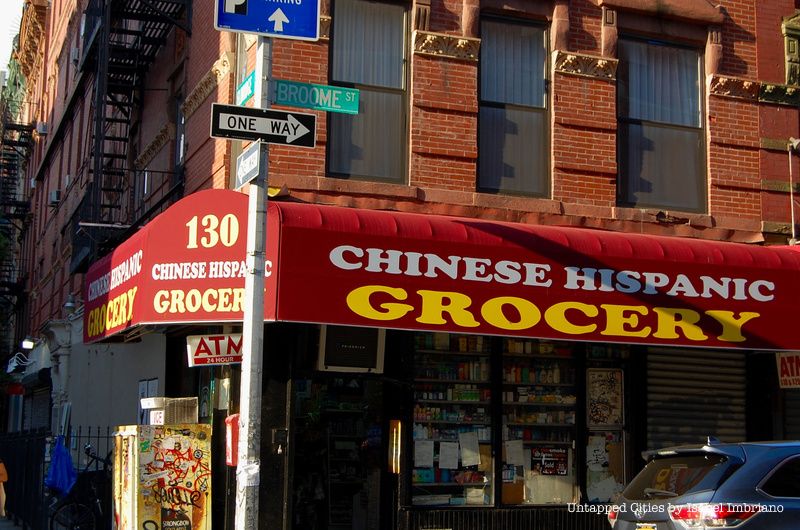
People always chuckle when they see the signage on this neighborhood bodega, but there is a deeper story to this bodega’s name. In the 1970’s, the Lower East Side saw an influx of Latino immigrants, many of them hailing from the Dominican Republic. According to an interview conducted by Fader Magazine, the store was called “Steve’s Grocery,” but when the neighborhood demographic changed in the 90’s — with more Spanish people moving away and more Chinese people moving in — the family that owned the bodega saw an opportunity and changed the name to “Chinese Hispanic Grocery.”
According to Rafael Perez, the son of the family, growing up in the Lower East Side was a dangerous time, when gunshots would ring out on the street. Being inside the family grocery store was the place where he felt the safest.
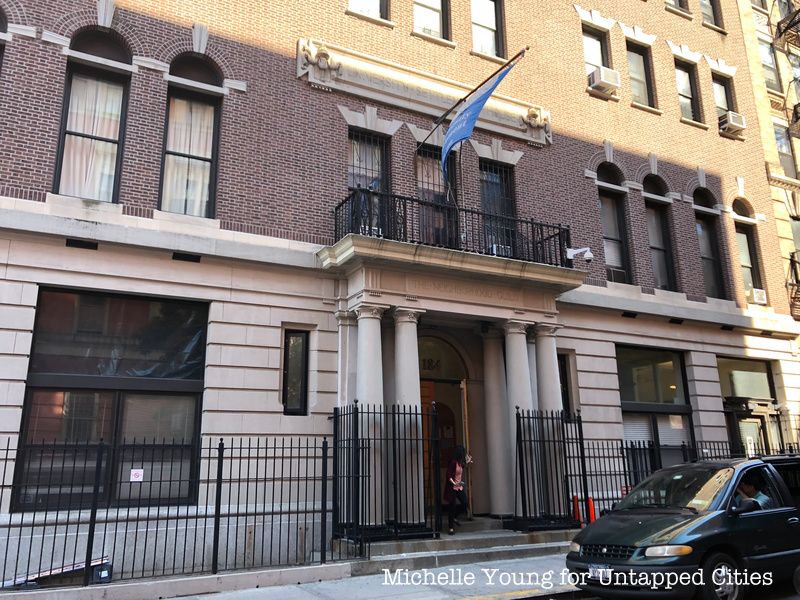
In 1886, a group of young urban reformers by the names of Stanton Coit, Charles B. Stover and Charles Schultz were looking for ways to tackle the daily hardships of life in the Lower East Side. The three men resolved to create an institution where immigrants could seek out assistance, advice and resources.
In a tenement basement on 146 Forsyth Street, the men established an organization called the Lily Pleasure Club, later renamed The University Settlement House. It offered everything from from English and vocational classes, the first Kindergarten in New York, public baths and recreational activities. Today, the University Settlement House is housed in a stately Beaux-Arts limestone and red brick building, designed in 1897 by architect and housing reformer, Isaac Newton Phelps Stokes (his first commission). Both Isaac and his wife Edith were instrumental in Progressive Era reform and today, you can visit their John Singer Sargent portrait at the Metropolitan Museum of Art.
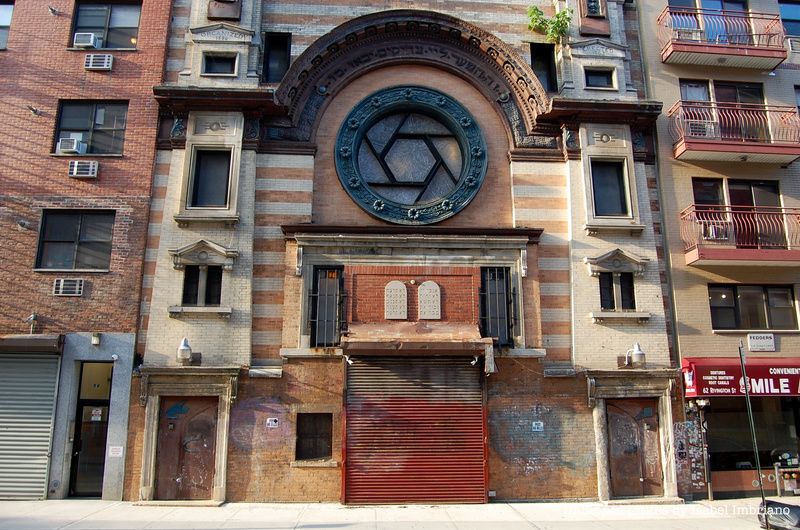
Designed by renown architect Emory Roth — a Hungarian immigrant who would become known for his apartment buildings on Central Park West and grand hotels like the Mayflower and Warwick — the Erste Washawer synagogue was built for a Romanian Congregation from the town of Iasi (Jassy) in 1903. When it was complete, it became known as the grandest of the small synagogues.
Congregation Adath Jeshurun of Jassy remained there until 1912, when a group of Polish immigrants purchased the building and renamed it for Warsaw, their city of origin. By the 1970’s, as the Jewish Lower East declined, the congregation abandoned the building. In 1973, an artist by the name of Hale Gurland was on his way to Orchard Street to buy shoes when he saw a crumbling “For Sale” sign. In a 2014 interview with Interview Magazine, he described the experience of discovering the building: “People were going inside the building because the doors were out, junkies were shooting up. I walked in, and the place looked like Dresden after the bombs. Rain was coming through the roof. It looked like they had a service, and everybody left. It was really cool. I forgot about the shoes.”
Today, the building has been repurposed as Hale Gurland’s studio and residency. Gurland made several alterations to the facade including the rearrangement of the rose window’s Magen David frame into the shutter lens of a camera.
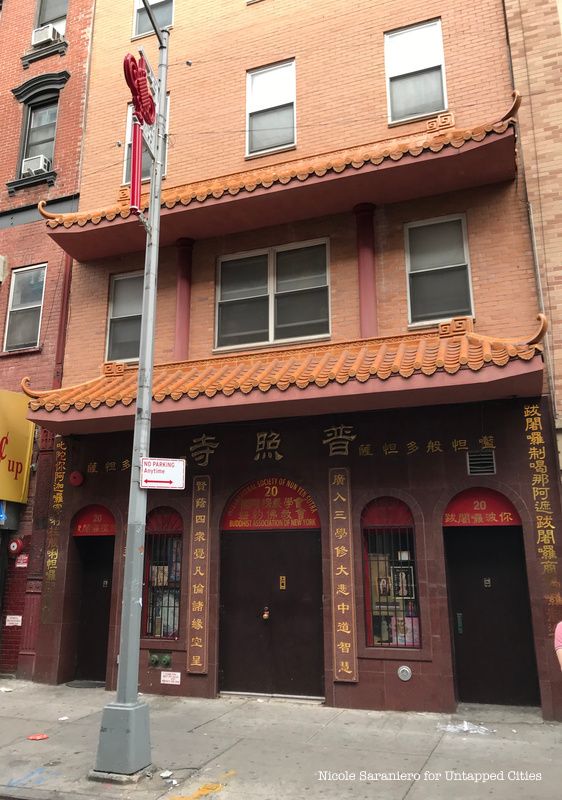
In the mid-19th century, 20 Eldridge Street housed an old fire station, the Hook and Ladder Company Eagle No. 4, which served what is noted as the Seventh and Eighth districts. The building, formerly two stories high with the maximum occupancy of 40 people, was constructed in 1855 by Pine and Hartshorn. It has since been repurposed as the Pu Chao Buddhist Temple, and now stands at five stories tall.
To learn more about the history of the Lower East Side and the Eldridge Street Synagogue, join us for our upcoming tour on October 26th. Tickets can be purchased below:
Secrets of the Eldridge Street Synagogue After Hours Tour
Next, check out the Top 10 Secrets of the Eldridge Street Synagogue and 7 Architectural Highlights of the Eldridge Street Synagogue.
Subscribe to our newsletter